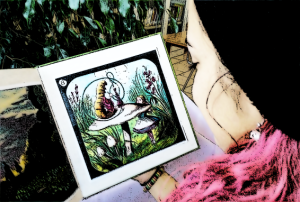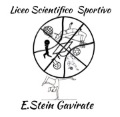
SIXTH WEEK of the game (december 10 – 16, 2015)
An island, a small bunch of vacationers and a trip that fades because of bad weather and is fulfilled only ten years later: it’s all here, in one of the most beautiful novels of the twentieth century. Divided into two parts, the story develops in the quiet and dizzying flow of time: a story emerges of people and different fates, below the conventional plot of the facts, which are reduced to a few lines as a conversation, a walk outdoors, a dance. The reality, the certainties, the facts, says Virginia Woolf, are one thing, but life is another: life is chaos. Then, what is a lighthouse? A light source, which broadcasts with an unchanging, permanent rhythm, signals in the dark. In this way Mrs. Ramsay, surrounded by the bustle of human relationships, as in the sea of her fluctuating emotions, divinely renews in herself the miracle of the people who can make sense of things. The beauty of “To the Lighthouse” is all in the charm of its inexplicable and simple protagonist, Mrs. Ramsay who recreates the rhythm, the music of life.
To the Lighthouse, Virginia Woolf
- The novel is divided into THREE ( not two) parts: “The window” – “Time passes” – “The lighthouse”
- In the first part of the novel there is a very celebrated DINNER (not dance). By candle light Mrs Ramsay gathers the guests around a table and , in the space of few hours, resolves disagreement, unveils connections, puts everyone at ease. The “chaos” of the insidious night is kept outside, inside it’s harmony.
FIFTH WEEK of the game (december 3 – 9, 2015)
A heremite in her own home, in 1891 Emily wrote:
Hope is the thing with feathers
That perches in the soul,
And sings the song without the words,
And never stops at all
……..
Emily Dickinson
- Emily Dickinson did not write the poem “Hope” in 1891 but in 1861 (she died in 1886!!)
- The third verse is “And sings the TUNE without the words ….” . TUNE not SONG, meaning something different from the musical cry of a bird, just the melody, the right intonation, in playing or singing.
FOURTH WEEK of the game (november 26 – december 2, 2015)
Harper Lee tells a story of racism & friendship with a deeply moving surprise ending. The author mirrors himself in Jem whose father fights for black people’s rights.
To Kill a Mockingbird, Harper Lee
First and second mistake : Harper Lee is female, her real name is Nelle, her grandmother’s name spelled backwards, and the first name she uses (Harper) is a pen name. As a woman she mirrors herself in Scout (Jean Louise Finch) Jem’s little sister.
THIRD WEEK of the game (november 19-25, 2015)
Mary Shelley started writing Frankenstein during the summer the Shelleys spent in Switzerland with Lord Byron and other friends. Percy B. Shelley had proposed a contest in which each of them should write a ghost story, and the book was the result of Mary’s effort. It is at the same time a Gothic thriller, a love story, and a warning about the dangers of science. The all-knowing narrator tells the story of young Victor Frankenstein, a scientist whose mad desire to defeat death leads him to try and reanimate lifeless matter. Frankenstein assembles a human being from parts of dead bodies but, upon bringing it to life, he withdraws in horror at the creature’s hideousness. Deserted by his own father, despised by everybody, the innocent-born creature turns to evil and plans a terrible revenge against his creator. “Frankenstein” not only tells a frightening story, but also poses profound, disturbing questions about human nature, man’s hubris in tampering with Nature, the responsibility of scientists.
Frankenstein, Mary Shelley
- The contest was proposed by Lord Byron, not by Percy Shelley!
- In this novel there is not an all-knowing narrator. The story is told by three different narrators: explorer Robert Walton who writes the story to his sister Margaret, doctor Victor Frankenstein who tells Walton about himself, and the Creature. You see that the book structure reflects Mary Shelley’s idea of life. She suggests that our life is inevitably a first person story and that, unfortunately or luckily, it is impossible to judge objectively what happens to us.
SECOND WEEK of the game (november 12-18, 2015)
The first edition of Leaves of Grass, the best poetry book of nineteenth century America, appeared in 1855 and gave voice to a restless America, full of vitality and conflict, it became the next big text of the War of Independence. From the first edition to the last one , Whitman worked to expand and rebuild his great book: it is therefore a lifetime’s work. Whitman sings primarily of himself, the source and center of sensations, feelings, will: “ I sound my barbaric yawp over the roofs of the city”, but also sings the ax, the sequoia, crafts and tools, and each symbol of life on earth, concrete, sweet and violent, sinful and innocent. Poetry of the new democratic world, large crowds and great works, announced the renewal of poetic worlds that would spread everywhere in the second half of 800. With the very famous poem “O me! O life!” Whitman tell us that life exists, and in this powerful play that goes on, we may contribute a verse. What will our verse be?
Leaves of Grass, Walt Whitman
- Leaves of Grass was the great book of the Civil War (1861 -1865), not of the War of Independence that took place more than 80 years before. In the very famous poem Oh captain my captain! dedicated to President Abraham Lincoln, Whitman expressed his gratitude to the President who defeated the slavery and strengthened the democracy in America.
- Inside the poem Song of Myself Whitman wrote the following verse: “I sound my barbaric yawp over the roof of the world”, not “of the city”. These words testimony the willingness of Whitman to write universal words.
FIRST WEEK of the game (november 5-11, 2015)
“Published in 1883, Treasure Island respects point by point the rules of the story of exotic adventure in piracy and seafaring. The hazy prelude of the story, in a remote bay of Scotland, the dispatch of a sailing ship, the open sea, the landing, the fights, the intrigues, everything goes with the engrossing rhythm of the fabulous novels that take your breath away. But in Treasure Island there is something more: a restless glance that, for the first time, explores the soul of the whalers, terrific and strange beings, hardened in ferocity, and at the same time obtuse, changeable and talkative. And throughout the adventure, told in first person by a boy, Jim Hawkins, you can find an indefinable atmosphere, deep and spacious feelings, as if the minimal and most ordinary fact of life, such as the changing of the tides, the sparkling of leaves, were a huge discovery, a world of promises unpredictable, miraculous, at every turn of night and day”.
Treasure Island, Robert Louis Stevenson
- The novel does not start in a remote bay of Scotland, but on the west English coast (near Bristol)
- The story deals with pirates and mariners, not whalers
 .Amministrazione trasparente
.Amministrazione trasparente .PON 2014-2020
.PON 2014-2020 Area Piano Nazionale Scuola Digitale
Area Piano Nazionale Scuola Digitale GDPR – Privacy
GDPR – Privacy Immuni
Immuni Liceo Sportivo – Discipline Sportive
Liceo Sportivo – Discipline Sportive Scuola in sicurezza
Scuola in sicurezza Segui le attività della Biblioteca su FaceBook
Segui le attività della Biblioteca su FaceBook Servizio MAD – Messe a disposizione
Servizio MAD – Messe a disposizione Stein – Sport e Movimento
Stein – Sport e Movimento .Attività di orientamento IN INGRESSO
.Attività di orientamento IN INGRESSO .Iscrizioni prime 2021/2022
.Iscrizioni prime 2021/2022 ACCESSO REGISTRO ELETTRONICO
ACCESSO REGISTRO ELETTRONICO ACCESSO SCUOLA&TERRITORIO
ACCESSO SCUOLA&TERRITORIO Associazione genitori
Associazione genitori Cordoglio per la nostra cara Preside Marina
Cordoglio per la nostra cara Preside Marina Erasmus+
Erasmus+ La scuola in vetrina
La scuola in vetrina Orario Scolastico dal 25.01.2021
Orario Scolastico dal 25.01.2021 PLACEMENT – Servizio di intermediazione al lavoro
PLACEMENT – Servizio di intermediazione al lavoro Segnalazione – Offerte di Lavoro e di Formazione Professionale Post Diploma
Segnalazione – Offerte di Lavoro e di Formazione Professionale Post Diploma